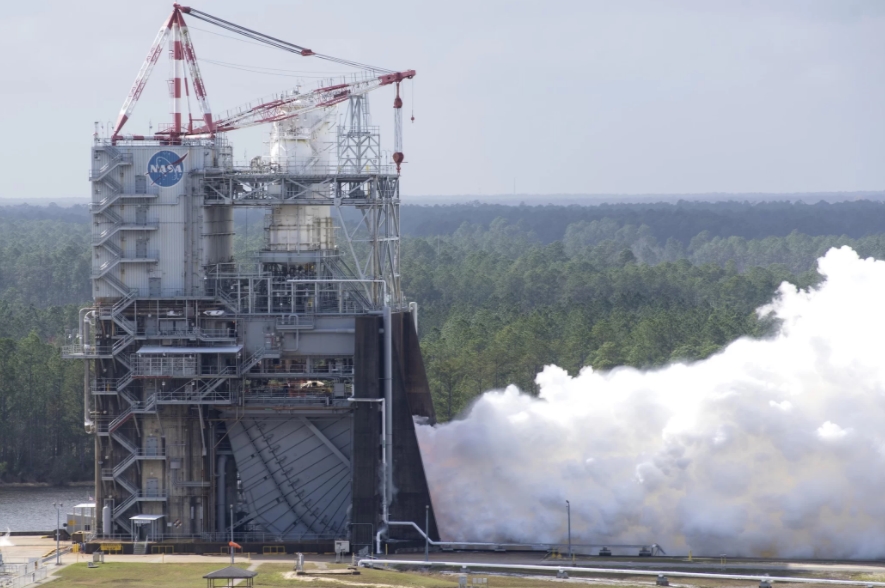
NASA’s Space Launch System (SLS) rocket, currently under development, is designed to carry humans and cargo to the moon, Mars and deep space.
During a Feb. 21 test at Stennis Space Center in southern Mississippi, the RS-25 engines reached their highest power level ever achieved, according to a recent statement by NASA.
Operators accomplished this feat by revving up the RS-25 engines to 113-percent thrust level for 260 seconds in a full-duration test.
How can a rocket engine achieve more than a 100-percent thrust? Well, RS-25 engines were first designed more than 40 years ago, for use with NASA’s space shuttle, and the power level they were capable of achieving at the time is the margin known as 100-percent thrust, according to NASA. RS-25 engines are former space shuttle engines that have been modified to perform more powerfully than ever before.
“Increased engine performance is crucial for enabling SLS missions to deep space as the rocket evolves to be larger and carry astronauts and heavy cargo on a single flight,” NASA officials said in the statement.
When the space vehicle is assembled and ready for launch, four of these formidable engines will create a combined 2 million lbs. of thrust, according to the statement. And there’s more: A pair of boosters on the SLS will work with the RS-25 engines to supply the rocket with a whopping 8 million lbs. of total thrust.
SLS will be an ever-evolving project, and parts of the rocket will be swapped in and out depending on the destination and mission goals. In this initial configuration, SLS can carry 26 metric tons (57,320 lbs.) past low Earth orbit and on to the moon, and in its final configuration, it should be able to carry at least 45 metric tons (99,208 lbs.) To put the SLS rocket weight capacity into perspective, 26 metric tons is about the weight of four adult African elephants.
The RS-25 engines will eventually attach to the rocket’s core stage, which NASA is currently building at its Michoud Assembly Facility in New Orleans
In addition to RS-25 ignition, the “brain” of the engine underwent testing. The new flight controller is one of the latest modifications to the engine design and will help provide precision control as it communicates with the rest of the SLS rocket. And in an ongoing effort to make SLS more affordable, operators also tested out a shock-absorbing component on Feb. 21, manufactured through 3D printing.
Stennis Space Center played an important role in Space Age history, as engineers used the facility to test the Saturn V rockets that first brought humans to the moon.

